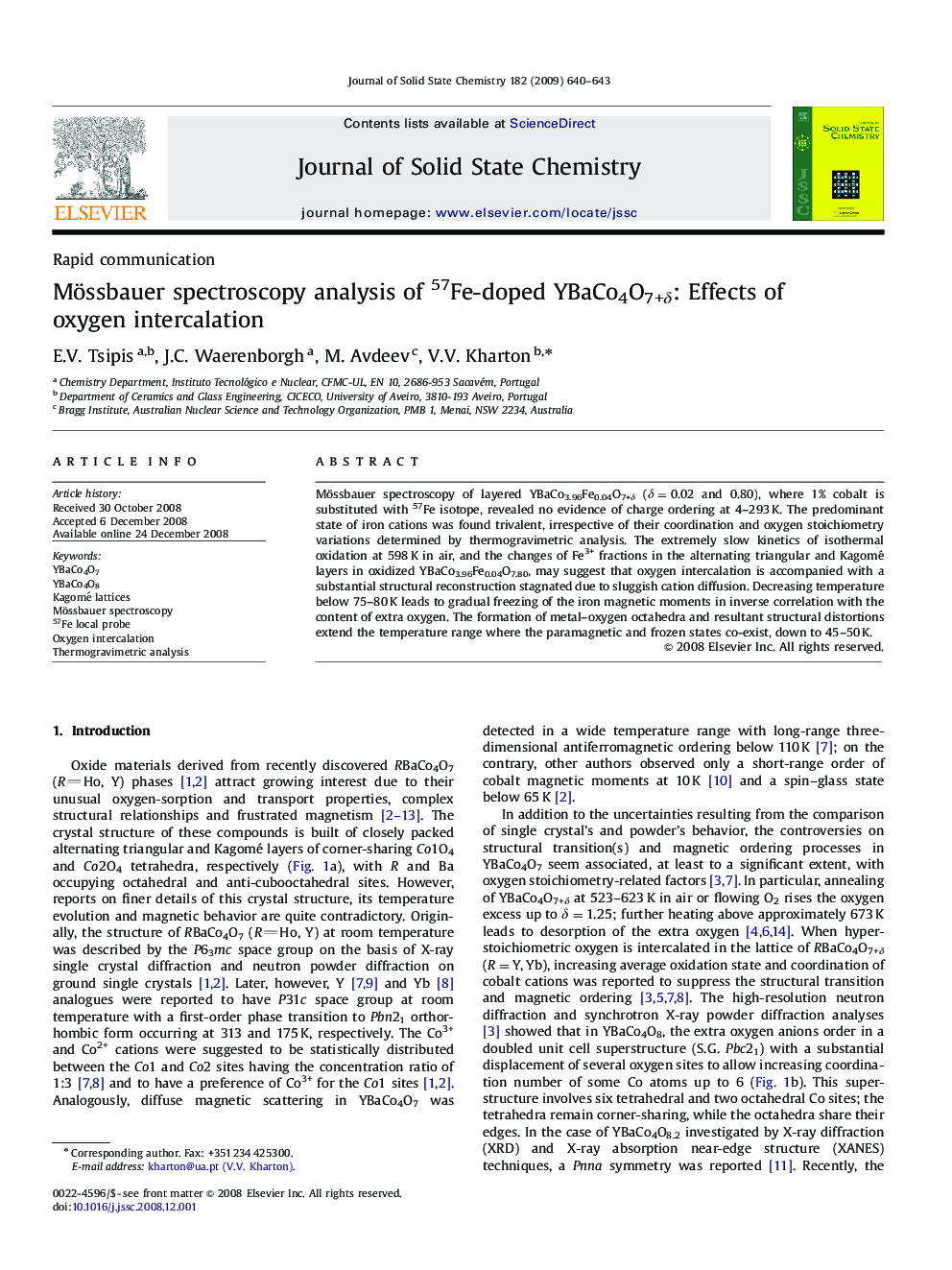| Article ID | Journal | Published Year | Pages | File Type |
|---|---|---|---|---|
| 1329502 | Journal of Solid State Chemistry | 2009 | 4 Pages |
Mössbauer spectroscopy of layered YBaCo3.96Fe0.04O7+δ (δ=0.02 and 0.80), where 1% cobalt is substituted with 57Fe isotope, revealed no evidence of charge ordering at 4–293 K. The predominant state of iron cations was found trivalent, irrespective of their coordination and oxygen stoichiometry variations determined by thermogravimetric analysis. The extremely slow kinetics of isothermal oxidation at 598 K in air, and the changes of Fe3+ fractions in the alternating triangular and Kagomé layers in oxidized YBaCo3.96Fe0.04O7.80, may suggest that oxygen intercalation is accompanied with a substantial structural reconstruction stagnated due to sluggish cation diffusion. Decreasing temperature below 75–80 K leads to gradual freezing of the iron magnetic moments in inverse correlation with the content of extra oxygen. The formation of metal–oxygen octahedra and resultant structural distortions extend the temperature range where the paramagnetic and frozen states co-exist, down to 45–50 K.
Graphical abstractMössbauer spectroscopy of layered YBaCo3.96Fe0.04O7+δ (δ=0.02 and 0.80), with 1% 57Fe isotope substituted for cobalt, revealed no evidence of charge ordering at 4–293 K. The predominant state of iron cations was found trivalent, irrespective of their coordination and oxygen stoichiometry variations determined by thermogravimetric analysis. Decreasing temperature below 75–80 K leads to gradual freezing of the iron magnetic moments in inverse correlation with the content of extra oxygen extending the temperature range where the paramagnetic and frozen states co-exist down to 45–50 K.Figure optionsDownload full-size imageDownload as PowerPoint slide
